It's time for the end of the year book reviews! Although I am not currently working as a librarian, I still can't resist browsing end of year lists and anticipating the ALSC awards in January. What you will find on my list, however, is not all books that were published in 2023, but a selection of the books I read this year. I enjoyed rereading some books that I've written about before: She Loves You by Ann Hood, Sophie Hits Six by Dick King-Smith, Howards End by E.M. Forster. Sometimes when I reread a book I listen to it instead, as with Persuasion by Jane Austen (there's a good version of that available on BBC Sounds). I'm currently working my way through Jane Eyre as a bedtime book. I'm still translating knitting patterns out of the amazing Skandi Strick. And there are all the books I've not been able to finish yet this year, which will spill into the next. In my travels to different places in the UK, I have picked up special books to grow my bookshelves here. When I arrived, I think I only had two!
I hope you will enjoy browsing through my list of 2023. Let me know what books you enjoyed reading this year! (Sorry about the changing fonts. I tried, but couldn't fix these on the silly Blogger page.)
1) The Golden Mole and Other Living Treasure by Katherine Rundell
I got The Golden Mole for Christmas last year and loved it! I could read this book over and over again and be equally amazed each time at every animal fact Katherine Rundell has included in her short essays on endangered living creatures. She intertwines so gracefully interactions between humans and the animal kingdom, often referencing accounts both historical and literary. The essays originally appeared on episodes from the London Review of Books podcast, and you can look them up to hear her reading them herself. Here is the episode in which Katherine Rundell talks about this book: "Consider the Pangolin."
Daughters of mine
If I could reach across the sky
Would they meet me halfway?
I enjoyed this novel more than Anika Fajardo's first middle grade novel, What If A Fish, an I hope her books get better and better with each one.
3) The Bird in Me Flies/The Bird Within Me by Sara Lundberg, translated by B. J. Epstein
The Bird in Me Flies (UK title The Bird Within Me) is translated from the Swedish Fågeln i mig flyer vart den vill. This book is about the childhood of the artist Berta Hansson, who lived in Northern Sweden for most of her life. Although the story is sad because Berta's mother dies of tuberculosis, there is happy news as well because Berta finally gets to attend art school, an opportunity she yearned for. The text brings across a message that was particularly strong in Scandinavia during this time: 'Don't think you're anything special.' Berta hears these words from her teacher and she is teased by classmates about her art. Sara Lundberg's illustrations, which are reminiscent of Hansson's style, have soft edges with deep, rich colour. I was able to read the original Swedish version of this book as well and I think the English translation, by a former professor at the University of East Anglia, is beautifully done.
4) Enola Holmes: The Graphic Novels by Serena Blasco, translated by Tanya Gold
After seeing the first Enola Holmes movie on Netflix, I read the first two original Enola Holmes mysteries written by Nancy Springer, The Case of the Missing Marquess and The Case of the Left-Handed Lady. They were okay, but I thought the writing was a little sloppy in places. I connected much better with the graphic novels from the French author Serena Blasco. I like the secret notebook sections at the end that describe the clues Enola collected during each case. Her thought process is explained and illustrations show how she unscrambled the cipher messages. (I'm just that dense, I didn't really understand that part in the novels.)
6) Just a Girl: A True Story of World War II by Lia Levi, translated by Sylvia Notini
I read this book after I saw that it won the 2023 Batchelder Award, though I don't generally read books about World War II and the Holocaust. I appreciate that this one is short and to the point. It is also interesting in that it is from the perspective of a Jewish girl in Italy during the war, while most historical narratives on this topic are about Jews in Germany, Poland, France, or the Netherlands. Another Holocaust book worth reading is the young readers' edition of Questions I am asked about the Holocaust by Hédi Fried, recently translated by Alice E. Olsson. Hédi was relocated to Sweden during World War II, and the original book is in Swedish.
7) The Dark is Rising by Susan Cooper, BBC dramatisation adapted by Robert MacFarlane and Simon McBurney
This is a 2022 dramatisation of the classic book by Susan Cooper in twelve parts which includes original songs by Johnny Flynn. I recently listened to it again before Christmas. Very British!
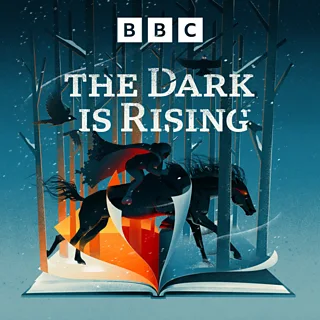
8) Småsagor series from Utbildningsradion
Småsagor is a programme from the Swedish broadcasting company UR. Each episode is a reading of a children's picture book put together with sounds and background music like a little audiobook production. A couple of my favourites to listen to are: Vi springer by Joar Tiberg and Sara Lundberg, read by Elin Skarin, and Pojken, pappan och björnen by Per Gustavsson, read by Vilhelm Blomgren. I was really glad I found this programme because it's so hard to get Swedish children's books in print. There are a number of high-quality audio productions for kids available on Sverigesradio and Utbildningsradio in Swedish. I've never been able to find the equivalent for English-speaking audiences.
9) Bea Wolf by Zach Weinersmith and Boulet
This parody of the epic poem Beowulf is genius! I can recommend it to anyone who has had to suffer through analysing Beowulf in English class (even though I mostly enjoyed that). The premise of Bea Wolf is that a gang of kids who just want to play/party all day and eat candy in their treehouse kingdom are sabotaged by their neighbour, Mr Grindle. Everything he touches turns old! He also breaks into the treehouse and cleans up their mess. Yes, it includes kennings and it is epic!
10) Only Yoking by Olga Putano
Oh, gosh! I want to try all of these patterns! I'm usually more interested in cables than colourwork—but if I can get a handle on how to make my colourwork a little more loose and not so bunchy (especially when working on a circular needle), I'll be able to use these patterns. This year I also enjoyed reading The Knitter magazine. Each issue contains regular features on new knitting books and types of yarn as well as skills tutorials—and, of course, loads of patterns. And you know the perfect podcast to listen to while knitting? Not one that's about knitting, but one I read about in The Knitter called The Plodcast.
11) The Plodcast from Countryfile Magazine
This is such a peaceful show. Each episode is a recording of people out on walks or bike rides or visiting some landmark. The ones I like most are of people walking and talking (not just walking alone and narrating)—so the interview with the guest takes place on a walk. Then at the end, the Plodcast team discuss the episode and share things they've seen in nature that week. It sounds like it could be super boring, but the hosts are so pleasant to listen to. They sound so friendly that it makes me feel like I'm friends with them!
12) The Skull: A Tyrolean Folktale by Jon Klassen
I am a fan of Jon Klassen's solo picture books and also his collaboration with Mac Barnett in The Three Billy Goats Gruff, so I was excited to read his newest book. It's a little grim because it's based on a folktale ghost story that Klassen came across while browsing in a library—but kids like grim, right?
13) Bear and the Whisper of the Wind by Marianne Dubuc, translated by Princeton Architectural Press
I came across this book while creating a list of children's books in translation. In this story, a bear lives in a nice house. He likes spending time with friends and enjoys his life. Then, one day: 'the wind changes, and Bear senses that it is time to go.' On his journey, Bear helps a rabbit fix his house, meets a mouse, and eventually finds a new favourite spot in the valley. There are times when he feels lonely, times when he feels free, and times when he regrets his decision to leave his comfortable home. I felt some of these same things about moving to a different part of the world this year. A note from the author at the end reads in part: 'there is always a comforting corner of the world to find.'
14) This Boy: The Early Lives of John Lennon and Paul McCartney by Ilene Cooper
I read a positive review of this book, and since it was readily available at my library I decided to check it out, even though I thought: is there really anything new to discover here? I'll admit, I skimmed over some sections, but when I got into the parts about John's family situation, I was intrigued. I was curious to learn about his uncle George (married to Mimi) and I also learned about how much time John got to spend with his mother Julia after his cousin told him how close she lived to where he was staying at his aunt Mimi's house. It also straightened out the timeline for me; I was thinking John's mum had died before Paul's mum. This is a book I would have devoured when I was younger! I was so interested in the Beatles and read anything I could about them. And so it brought back the nostalgia of discovering new information about the Beatles' lives. I wish the same treatment would be done for George's and Ringo's childhoods! Attention copy editors: a typo in the afterword misspells Jeff Lynne's name.
15) The Colonel's Family by Fredrika Bremer, translated by Sarah Death
Fredrika Bremer is called Sweden's Charlotte Brontë, and though I began reading this book expecting something along the lines of Jane Eyre or Villette, it turned out to be much more comical and unexpectedly funny. It's narrated in the first person by a friend of the family. She's in part a companion to the daughters and has some housekeeping duties. What I would criticise in the writing style is that it changes kind of abruptly in the second half and I thought the book tried to do too much for the length that it is. Still, it's worth reading because of several unexpected incidents. Part One is focused on the eldest daughter of the family, Emilia, and her reluctance to go through with her marriage. This scene takes place during the viewing of the bride:
The Cornet, who followed his father into the room, presented Emilia on Algernon's behalf with some exquisitely beautiful fresh flowers and a note, which contained only a few lines, but they were anything but cold and formal. Emilia's face brightened, and she squeezed her brother's hand. Indulging in a fit of chivalrous passion, he fell to his knees and begged leave to kiss the toe of her shoe. She graciously extended her little foot, and as he bent down, not as I thought to kiss the toe of her shoe, but to bite it, she put her arms around his neck and kissed him warmly.
Yes, her brother just bit her shoe. Well, if that wasn't silly enough, in Part Two several other amazing incidents occur. On the way home from making some calls, the family's carriage gets stuck and a wheel falls off. They're in a hurry to get home because: 'Not to have tea between six and seven in the evening was a real hardship for the Colonel.'
As the carriage began to move—crack! One of the back wheels came off, the carriage toppled slowly over, and amidst a chorus of cries we were tossed one over another and down onto the road. Her ladyship was lying on top of me. But before trying to get up, she was struggling to free her reticule, which had ended up trapped underneath me. I assured her that this would be quite impossible for as long as I was unable to move from the spot. At last we were all on our feet again. Her Ladyship was pale and we all gathered round her, concerned and anxious, asking a thousand questions, whether she had hurt herself, or had a great shock, and so on. But when she answered no to all this and we too, in answer to her own anxious enquiries, had admitted we felt neither shocked, grazed nor bruised (I did not mention being squashed), Julie burst into such loud and hearty laughter that we followed suit.
This material is just made to be put into a drama. But the darker side is that one of the characters living with the family is the Colonel's niece. She is quite young, but has cataracts that make her blind. She was orphaned in her teens (I think) and sent to live with her uncle, with whom she promptly fell in love. After years of torment, she gives him one kiss on her deathbed. This is scandalous:
Only the Colonel and his wife remained where they were. Elisabeth fell silent for a moment, her breathing heavy and laboured. Finally she said, 'Would my uncle come to me?' The Colonel went over to her, she stretched up her arms to him, he bent down to her—they kissed. And what a kiss! The first and the last—the kiss of love and death!
The entire family, is present, by the way, as well as the young pastor. And then, before the book's end, Julie (second daughter) leaves her fiancé after a prolonged engagement to marry the pastor! Someone just really needs to adapt this for a movie or mini series. Often when a novel is adapted for the screen a lot of the sentimentality is cut out and the funny side becomes more relatable to today's audiences, bringing us closer to writers of the past. I'm glad that I got to read this in English translation. I would like to read Bremer's books in the original Swedish, but am sometimes put off by how much longer it takes me that I end up not reading them at all. Norvik Press (which began at the University of East Anglia) has a growing catalogue of classic Swedish writers. These books are out in a new English translation for the first time since their initial translations way back around the time the books were first published in Sweden.
16) The Observologist by Giselle Clarkson
This is a book about noticing and appreciating the living world around us, and the author's enthusiasm for all small creatures is contagious! Even plain creatures like worms and brown moths can be praised for the intricacies of their life cycle. Part of the book's charm is how visually engaging it is. Memorable cartoons accompany the text. It's best read in sections when you need a bit of a silly feeling. I especially liked the comparisons in the drawings and in the text of ways humans can imagine the life of these creatures. For example: 'To a tardigrade, a lichen would seem like a great, rolling landscape. That's something nice to think about when you next see one.'
17) The Girl who Fell to Earth by Patricia Forde
I appreciate a good sci-fi story from time to time. The premise here is that the Earth is really a 'shadow planet' of a world called Terros. It was set up about a thousand years ago and populated with lifeforms similar to Terrosians as an experiment. Within the first few pages, Aria discovers that she is not entirely Terrosian, but also has human DNA. Then she and her father are sent to Earth on a mission to release a deadly virus that will wipe out all human life and end the experiment. (Yet another story in which the alien invasion is centred on the British Isles.) And of course there's lots of tea! If that sounds like a lot to pack into 186 pages, it really doesn't seem like it when you read this book. I was impressed that Forde could develop a believable world in so few words. And I was amazed at how much the narrator's voice sounds like an outsider, even though I know it must have been written by someone from Earth. I did notice one spelling mistake in the main character's name that I hope will be amended in future editions.
18) The Queen's Gambit by Walter Tevis
This book was as addictive to read as The Tenant of Wildfell Hall by Anne Brontë. I don't even like chess, and still I was curious about what would happen to the main character. Honestly, I skimmed over all the specific chess moves and just enjoyed the descriptions of how Beth feels when she plays chess. The recounting of a play-by-play in specific games is intensified by little additions of 'Beth felt a tiny thrill' and 'something in Beth wanted to jump and shout, but she held herself back'; and when she gets a knot in her stomach, you are worried for her. Beth is in a precarious position throughout the book because she struggles with addictions to tranquillisers and alcohol. She gets very little guidance or support from the adults in her life. Seeing the Netflix series of this book a couple years ago is what made me want to read it, and from what I can remember the series is quite close to the book.
19) Everyone Walks Away by Eva Lindström, translated by Julia Marshall
This book is so short that you can read it over and over again, but will you get it? I'm not sure that I do understand it. I appreciate how the text goes with these illustrations, yet as I read it I could very much picture the text being used with other illustrations, too. That's because I think a lot of power is in the text itself, which could stand alone and is only enhanced by illustrations.
20) Härdarna and För trädets skull by Karin Boye
I'm currently translating some of Karin Boye's poetry as part of a Master of Arts course at the University of East Anglia. I selected poems that stood out to me from two of her books. Boye is known as a modernist poet, but actually much of her work is formal poetry (not free verse), and it's the ideas that are modern, not the form. These poems were written in the 1920s and '30s and it is interesting to choose certain ones that speak to me as a postmodern reader almost one hundred years later. There's a lot of nature imagery in her work, always of plant life and more rarely animal life (most often birds). You get the feeling of wandering in a desolate, bare, rainy autumn wood. There's also a lot of hardness—things breaking open, things coming out of shells, metal, earth's core, stone, and rock; but on the other hand, soft things like clouds and flowers and trees coming alive in the spring, representing vulnerability. The 1920s style reminds me a little of Edna St. Vincent Millay, but Boye's language is more bare (as in minimal) and not as richly descriptive—not at all ornate or florid. Boye's most famous poem, "Ja visst gör det ont" has been translated into English several times, and her complete poems have been translated by David McDuff. You can read them on the website of the Karin Boye Society. Yet, reading these I felt that none of them do justice to the work and they are actually quite awkward-sounding in places. This is reassuring to me, that published versions by other people also turn out as my drafts do—it's not just me! But it's also disappointing. It's an incentive to do better, and I hope that my versions bring out qualities that will give readers in English an accurate impression of the originals. These are two of the poems I've been working on, which I have titled "Yes, It Hurts" and "I Want to Meet...". The Swedish text comes first here.
Ja visst gör det ont (1935)
Ja visst gör det ont när knoppar brister.
Varför skulle annars våren tveka?
Varför skulle all vår heta längtan
bindas i det frusna bitterbleka?
Höljet var ju knoppen hela vintern.
Vad är det för nytt, som tär och spränger?
Ja visst gör det ont när knoppar brister,
ont för det som växer
och det som stänger.
Ja nog är det svårt när droppar faller.
Skälvande av ängslan tungt de hänger,
klamrar sig vid kvisten, sväller, glider—
tyngden drar dem neråt, hur de klänger.
Svårt att vara oviss, rädd och delad,
svårt att känna djupet dra och kalla,
ändå sitta kvar och bara darra—
svårt att vilja stanna
och vilja falla.
Då, när det är värst och inget hjälper,
brister som i jubel trädets knoppar.
Då, när ingen rädsla längre håller,
faller i ett glitter kvistens droppar
glömmer att de skrämdes av det nya
glömmer att de ängslades för färden—
känner en sekund sin största trygghet,
vilar i den tillit
som skapar världen.
Yes, It Hurts
Yes, it hurts when buds burst.Why else would the spring hesitate?Why would all our ardent longingbe bound in bitter frozen paleness?The bud was covered the whole winter.What has changed, that wears and breaks?Yes, it hurts when buds burst,hurts for that which ends,and that which wakes.
Yes, it’s hard when droplets fall.Shaking with fear they heavy hang,cling firmly to the branch, swell, slide––the weight draws them down, however they cling.Hard to be uncertain, afraid and divided,hard to feel the deep pull and call,yet to sit and only tremble––hard to want to stayand want to fall.
Then, when it’s worst and nothing’s helping,the tree’s buds burst as in joy.Then when fear no longer holds them,the branch’s droplets fall in a glitterforgetting they were frightened of the newforgetting they were worried to be unpearled––feeling for a second the greatest security,resting in the trustthat creates the world.
Jag vill möta… (1927)
Rustad, rak och pansarslutengick jag fram—men av skräck var brynjan gjutenoch av skam.Jag vill kasta mina vapen,svärd och sköld.All den hårda fiendskapenvar min köld.Jag har sett de torra frönagro till slut.Jag har sett det ljusa grönavecklas ut.Mäktigt är det späda livetmer än järn,fram ur jordens hjärta drivetutan värn.Våren gryr i vinterns trakter,där jag frös.Jag vill möta livets maktervapenlös.
I Want to Meet…
Erect, equipped and closed in armour,forward I came—but of fear the mail was madeand of shame.
I want to toss my weapons,
sword and shield.All my cold enmityI will yield.I have seen the dry seedsfinally sprout.I have seen the bright greenopen out.
Powerful is the young life
stronger than iron ore,driven without defenceout of earth's core.
Spring is dawning in winter’s land,where I was turned to ice.I want to meet life’s powersweaponless.
Other Swedish poems I have enjoyed from Dagens dikt this year are by Willy Grankvist, "Tullundsmannen" and "Besvärjelse"; by Edith Södergran, "Dagen svalnar"; by UKON (Ulf Karl Olov Nilsson), "Tänk om"; and by Lotta Ekström, "Arvet".
21) Carl and Karin Larsson: Creators of Swedish Style, edited by Michael Snodin and Elisabet Stavenow-Hidemark
I picked up this book again recently—I had seen it before, but only looked through the pictures—because of the new series about Carl and Karin Larsson on SVT (called Karin och Carl Larsson). The series is really well done; I especially liked how they take you through all the rooms at Lilla Hyttnäs (the Larssons' home in Dalarna, Sweden) as they tell their story. They show the actual rooms and superimpose Carl Larsson's paintings onto them. It's also just as much about Karin Larsson because she was such an influence along with her husband, both to him by supporting him in his art and for the way she designed their home. She continued to make art while raising a family, creating textiles and designing furniture (though not making a career in painting which she also had studied). She made many of the tapestries that appear in Carl Larsson's watercolour paintings of their home. Even within their lifetime, they had so many visitors to Lilla Hyttnäs—people loved it! At the end of the series they talk about Carl Larsson's paintings for the Nationalmuseum including Midvinterblot, his final and most controversial work for the museum. I also listened to an episode of the podcast Verket, which is about that painting: Midvinterblot. But for those of you who need an English version, I recommend the book for a look at Carl and Karin Larsson's style.
That's my list for 2023. Thank you for reading!


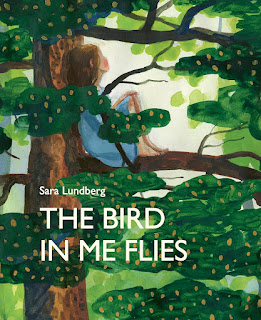










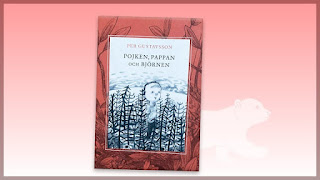

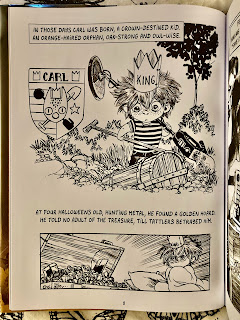

















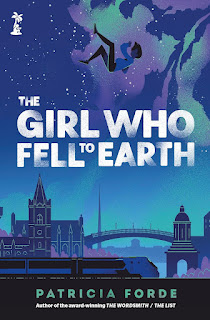





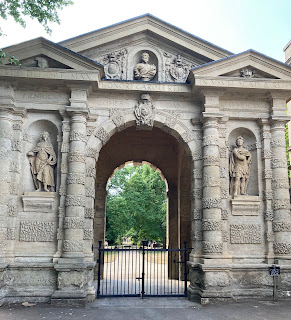


No comments:
Post a Comment